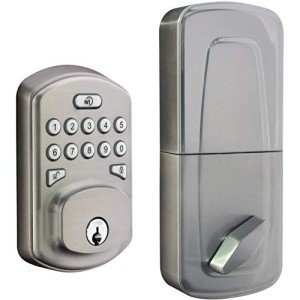Traditional Lighting in the UK: A Comprehensive Overview
Traditional lighting holds a valued place in the homes and public areas of the United Kingdom. With its capability to evoke nostalgia, charm, and heat, traditional lighting fixtures offer not just visual appeal however likewise practical worth. This short article digs into the numerous types of traditional lighting common in the UK, their history and development, popular designs, and how to incorporate them into modern decor.
A Historical Perspective on Traditional Lighting
The advancement of lighting in the UK has actually been comprehensive. From the flickering flames of candle lights and oil lamps to the introduction of gas and electrical lights, the journey is as interesting as it is enlightening.
Secret Milestones in Lighting History:
- Candles (Before 1800s): The earliest type of artificial light, utilizing tallow or beeswax.
- Oil Lamps (Late 18th Century): These became popular in homes and theaters, offering brighter illumination than candle lights.
- Gas Lighting (Early 19th Century): Revolutionized public and street lighting before electricity took precedence.
- Electric Lighting (Late 19th Century): Marked the transition to modernity, with incandescent bulbs gradually changing older kinds.
Each of these developments led the way for traditional lighting, which still integrates ancient strategies into contemporary styles.
Kinds Of Traditional Lighting
Traditional lighting can be classified into several unique types, each with its special qualities.
1. Chandeliers
Chandeliers are frequently the focal point of a room. lightingandlamps are available in different designs, from elaborate Victorian styles to simple, rustic models.
Popular Features:
- Crystal decorations
- Iron framework
- Different bulb types
2. Wall Sconces
Wall sconces offer both artistic style and soft lighting. They can be utilized in hallways, living spaces, or bathrooms, boosting the environment of a space.
Typical Styles:
- Candle-style sconces
- Brass or iron fixtures
- Vintage-inspired designs
3. Table Lamps
Table lamps embody the flexibility of traditional lighting as they can fit into any room. Varying from simple designs to elaborate pieces, they are ideal for checking out nooks, side tables, or desks.
4. Floor Lamps
Comparable to table lamps in style and function, floor lamps can create cozy corners in a home. Vintage designs typically consist of tripod bases or elaborate patterns.
5. Lanterns
Though frequently associated with outdoor settings, traditional lanterns can likewise be used inside for a rustic touch. They are available in different materials consisting of wood and metal.
Including Traditional Lighting into Modern Decor
In a world increasingly leaning towards minimalism and modern styles, traditional lighting still holds its ground. The secret is to preserve a balance. Here are some tips for including traditional lighting into a contemporary home:
1. Mix Styles
Combine traditional lighting with modern furniture to produce an eclectic room. For example, a vintage chandelier can be hung above a streamlined dining table.
2. Usage Dimmer Switches
To control the ambiance, install dimmer switches that enable soft lighting, which matches both traditional and modern interiors.
3. Go With Mixed Materials
Select lighting fixtures that integrate various materials, such as a wooden lamp with a metal or glass base, to bridge the space in between old and brand-new.
4. Highlight Architectural Features
Use traditional fixtures to highlight unique architectural functions in your house. For example, hanging a vintage lantern in a hallway with exposed brick improves its rustic appeal.
5. Include Natural Elements
Choose styles that include natural materials such as wood or wrought iron. These components tend to blend well with modern decor while retaining a traditional style.
Table: Comparison of Traditional Lighting Types
| Lighting Type | Description | Common Materials | Typical Settings |
|---|---|---|---|
| Chandeliers | Decorative ceiling fixtures, frequently ornate | Crystal, metal | Dining-room, ballrooms |
| Wall Sconces | Installed fixtures that supply ambient light | Brass, iron | Hallways, living rooms |
| Table Lamps | Portable lamps for tables and desks | Glass, ceramic | Bed rooms, offices |
| Floor Lamps | Standalone lamps for corner lighting | Wood, metal | Living rooms, dens |
| Lanterns | Rustic or vintage light sources | Wood, metal | Patios, gardens |
Frequently Asked Questions
1. What is traditional lighting?
Response: Traditional lighting refers to light that embody historic or traditional styles, typically identified by the use of elaborate materials, detailed patterns, and a warm visual.
2. How can I keep traditional lighting fixtures?
Answer: Regular cleaning and periodic deep cleansing are essential. For fixtures with glass or crystals, utilize a mild glass cleaner. For metal parts, ensure you use appropriate cleansing services that will not harm the finish.
3. Are traditional lighting fixtures energy-efficient?
Answer: Many traditional fixtures can accommodate modern LED bulbs, which use better energy efficiency. Constantly examine compatibility when changing to LED alternatives.
4. Can I mix traditional lighting with modern style?
Answer: Yes, mixing traditional lighting with modern design can develop a distinctively inviting space. Balance is important; select complementary styles to maintain visual harmony.
5. What is the very best method to select traditional lighting for my home?
Response: Consider your home's total design, the function of the space, and individual taste. Take measurements to guarantee suitable sizing and select materials and colors that balance with existing decor.
Traditional lighting acts as a long-lasting link to history, workmanship, and aesthetics, proving that ageless designs have their rightful place, even in the middle of developing patterns. Understanding the various types of traditional lighting and their application can assist homeowners produce inviting areas that reflect both beauty and warmth, flawlessly mixing the past with today.

